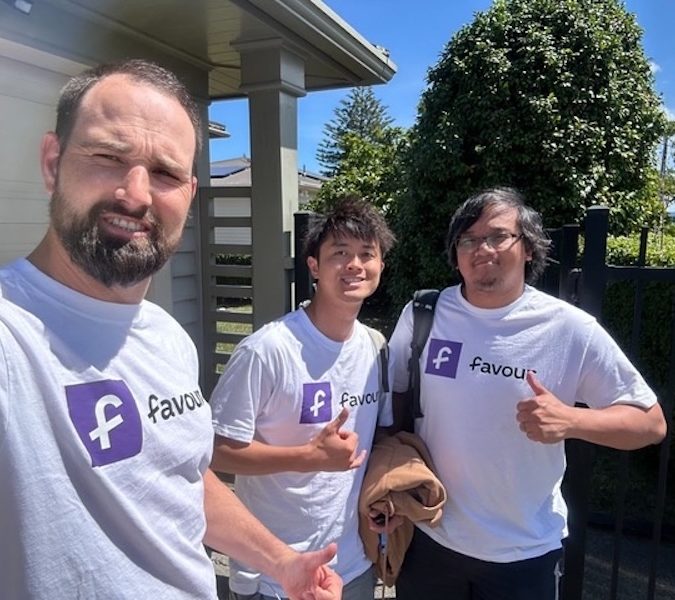
OPINION: Tim Packer was appointed Wellington General Manager for RUSH in 2022. Since that time, Tim has represented RUSH in the health sector and attended the annual HINZ Digital Health Leadership Summit 2022, co-authoring the resulting whitepaper; ‘Unlocking Value for Mental Health & Wellbeing with Human-Centred Design’.
While not a health expert, given RUSH’s capabilities of designing and building bespoke technology solutions, Tim and his colleagues have seen the power of digital tools to support improved health journeys and the potential impact these can make on some of the growing health challenges we face as a society.
The unexpected arrival of Covid-19 slowed down the modern world in many ways, whether it was international tourism and trade, cinema attendance rates or the weekly supermarket shop. But the urgent response to the pandemic also led to rapid progress in other areas, from the development of mRNA vaccines to the use of digital tools like the NZ Covid Tracer app. Other digital technologies such as video consultations, remote working tools and wellbeing apps also rose in popularity due to the unique circumstances of lockdowns, rising case counts and the associated increase in anxiety levels.
The broader adoption of those tools and technologies have led to some significant behavioural changes, now we have a real opportunity to put them to use to try and alleviate a different but growing crisis: mental health.
In New Zealand, it’s thought mental health issues affect 1 in 2 New Zealanders at some point in their life, and mental distress is higher among people aged 15-24. But, as in other areas of our health system, there is a severe lack of staff to meet the growing demand for services. As of late last year, the country was short of almost 650 public mental health staff, and Mental Health Foundation CEO Shaun Robinson said it would take about a decade to fill that hole in a best-case scenario.
Digital health has been identified by Te Whatu Ora / Health NZ as one of six key priorities to help transform New Zealand’s health system. That’s a positive step, as well as a time-consuming one, as the transformation task underway is a massive and complex undertaking.
If we consider the urgent needs of those facing long wait times and experiencing barriers to accessing the support they need – and the pressure currently on staff to provide it – digital tools offer the potential to support an improved health journey for both the patient and the practitioner.
Leveraging human-centred design (HCD), which RUSH uses everyday to design impactful digital solutions, we can reimagine and redesign patient journeys within the mental health system and identify how digital solutions can support and augment their experience.
Read more: NZ’s tech HR departments battle major challenges as borders reopen
Well-designed digital tools can also play a positive role when it comes to interventions and treatments. Cognitive behaviour therapy delivered over the internet is one of the best-studied digital mental health tools and a meta-analysis of 29 Swedish studies involving almost 3,000 patients with anxiety disorders and depression revealed that 65.6% of them improved, and one-third achieved remission. Online tools can also ease the stigma some patients feel around having mental health treatments in-person.

People on a mental health journey can be more empowered to take ownership of their wellbeing, by being presented with options and choices that work for them, whether digital or in person. By removing confusion and friction in the current system, and bypassing some of the barriers to access (such as location, or time of day) the path to better mental health support will be clearer.
We’ve seen the power of technology to support mental health journeys in action. Youth mental wellbeing platform, The Lowdown, was relaunched in 2022 when RUSH was brought on to update and elevate the experience, and amplify Māori and Pasifika approaches to mental health. It was created for and with rangatahi to learn, express and engage around their hauora, identity, culture and mental health. And since going live, the platform has seen an almost 500% increase in organic traffic and a 200-300% uplift in average time on page.
This is not just about helping patients, however. We spoke to practitioners and clinicians in the health sector that said they are at ‘breaking point’, due to the unprecedented demand on their services. By digitising systems, we can free up their time and allow them to spend it on patients.
Digital health technologies created through human-centred design are not a silver bullet for the many mental health issues New Zealanders face. They are not a replacement for human interactions, which are crucial for improving mental health, but can aid healthcare workers in using their time more effectively with their patients. The demand for mental health services outweighs supply at present, and shows no sign of changing. Just as time in the office has some advantages over working from home, and vice versa, a hybrid approach to health, with complementary in-person sessions and digital tools, will also be beneficial.
Now more than ever, we need empathy. Empathy for the people of Aotearoa who need health services, and empathy for those overworked health practitioners and clinicians who work so hard to provide them. Human centred design provides us with a toolbox to build this empathy – to understand what jobs people are seeking to get done, to feel their pains and their frustrations, and to share in their hopes and dreams. To ultimately design experiences and systems that better serve their mental health needs – enabled by technology, rather than determined by it.




